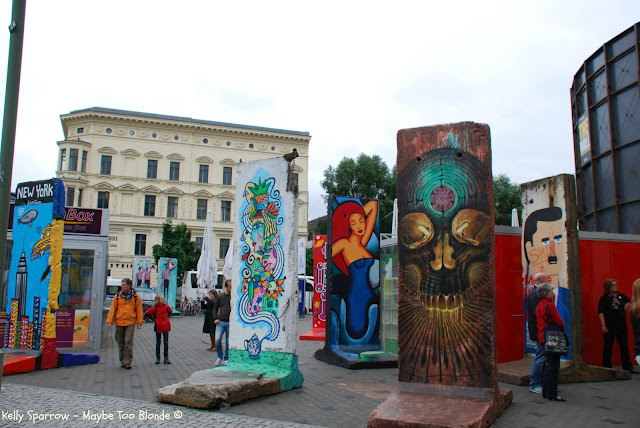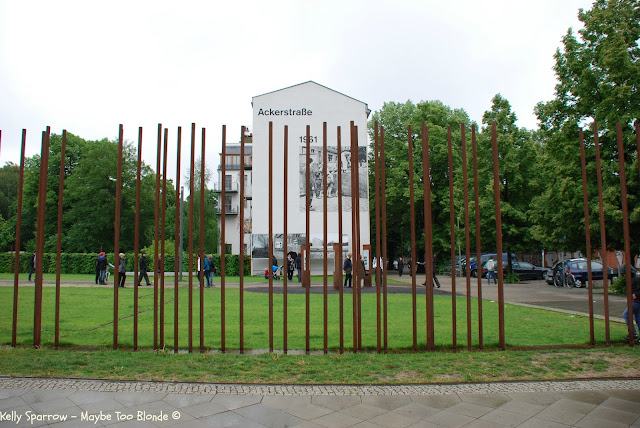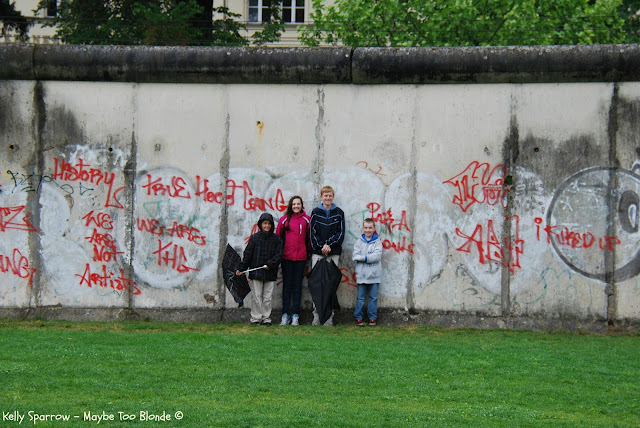When we first moved to Germany last year and decided that we would travel and see as much as Europe had to offer, I already had it in my mind that we would visit concentration camps and I would let my children know that while Europe has a wonderful history of which they are apart of, it also has a very dark side too. Before we had taken many trips I started asking fellow Americans here in Germany where they had traveled to and what were their favorites. And then I realized that hardly any of them had been to any concentration camps. When I asked why, they all mostly answered that they didn't want to focus on that part of Europe's history. Or that their children were too young to understand what happened there and the gravity of the place. I was a little surprised, but didn't say anything else on the matter. What parents decide to expose their children to is their business, not mine. I felt that all of my children were old enough to visit these places and to know what happened. My kids have always been interested in World War II as they have German grandparents, for who Nazis were real people, not just figures in movies. My in-laws could tell stories that would leave my eyeballs round and my throat tight with disbelief. Europe's history is our history too.
Before going in, I told my children to treat this place with the utmost respect for the people who suffered and died here.
Sachsenhausen was not a "death camp" like Auschwitz, where people were sent to be exterminated. It was a work camp. Meant to wring out every bit of strength and productivity from its inmates by making bricks to build up the Berlin of the future that the Nazi Party envisioned. The gate on the front of the camp says Arbeit Macht Frei or Working Makes [you] Free. A cruel promise that if the inmates worked hard enough, they would earn their freedom. That is something that never happened. The camp opened in 1936 and was also used as a prison. It held murderers, rapists, Soviet prisoners of war, homosexuals, and Jews.
Here is a section of the barbwire fence that they have left intact. The original camp was in the shape of a triangle so that guards in one tower at the corners could see every angle of the camp.
This gravel area was called the "death strip". Guards were ordered to shoot anyone who ventured into it. Prisoners used it as a way to commit suicide. Soon the guards were catching on and if they thought anyone was trying to get themselves killed, they would only shoot to maim. Those who wanted to die were forced to live, and those that wanted to live often died.
There are memorials placed there from different countries and in different languages to remember all the Jewish people who lost their lives here.
Very few of the original building are left standing here. They were removed under authorization from the East German government. There are gravel markers showing where former barracks and buildings had stood.
The day was quiet with puffy clouds and sunshine. A soft breeze rustled the leaves and the camp was virtually empty. At times it felt like we could have been at a park. It was very surreal to stand in a place where so much suffering and death had happened, yet feel such a peace in the land around us.
The government of East Germany erected this tower as a symbol to the suffering of political prisoners here during World War II. Saying somehow, that their suffering was worse than that of the Jew or other prisoner.
200,000 prisoners were held at Sachsenhauen between 1936-1945. 50,000 of them died there, while many were transported to be killed elsewhere. The Red Army (Soviets) began their advance on Sachsenhausen in the spring of 1945. The Nazis sensing that their demise was coming soon, marched 35,000 prisoners out into the forest on what has become known as the "Death March". The prisoners were forced to walk with no food or water for eight days straight because the SS guards did not want to waste bullets killing them. After 6,000 of them had died, the guards abandoned them in the woods until they were found by the Soviets.
Only three months after the end of the war, the Soviets turned Sachsenhausen into a political prisoner camp where they held Germans and Nazis. The suffering was to continue here. 12,500 more people died here until the camp was closed in 1950.
Sachsenhausen is situated right in the middle of the town of Oranienburg, Germany. It was very rare to have this size of a town so close to a concentration camp. In the camp there are signs talking about the different kinds of residents that lived in Oranienburg. Some profited from the Nazis and the camp. Some were indifferent. And some tried with all their might to help the inmates of the camp. Their were stories of residents who heard the shots of guns, the screams, and saw the thick, black smoke belch from the crematorium. And then the ashes that would be carried into town on a strong wind.
This is the execution trench where inmates were piled into for mass executions. Their bodies were then wheeled out in wheelbarrows up this ramp. Mass graves have been found all over the camp. One was found as late as 1990 holding over 12,000 people. Mostly women, children, and elderly.
The guards found the mass shooting of inmates taking too long. So they built Station Z, the crematorium, where prisoners could be executed and disposed of much more efficiently.
The SS guards who ran the camp ordered that the ashes be used to fill in potholes in the roads and paths in the camp and to be scattered around the grounds. The SS guards tried to destroy the crematorium right before the Red Army liberated the camp. However, it was still apparent as to what had been happening at the camp. Currently, the crematorium is protected by this white overhang to prevent any further damage to it by the elements.
Upon the reunification of Germany, the German government placed a much more fitting memorial to those who suffered and died at Sachsenhausen.
When the Soviet army liberated the camp and the remaining inmates that had survived the death march were found in the woods, the inmates who were strong enough returned to the camp to help their fellow inmates. And to bury their dead. After suffering so much, the first thing on their minds was to still care for each other. Even in death.
I had come prepared to Sachsenhausen with a full package of tissues. But the tears never came. Walking around the camp I felt numb more than anything else. Almost like the atrocities that happened here were so great that it overwhelmed me. We mostly went our own way here and digested the things we saw and read on our own.
We stayed out of the museum which has the very graphic pictures of emaciated prisoners and piles of bodies, but we let our children walk and explore the open grounds on their own. Except for Andre. As he is only eight, we held his hand and tried to explain the best we could to an eight year old what had happened here and why this place was special without confusing him too much. But it was hard to talk to him. How do I explain to a child why and how this happened when I don't really understand it myself?
What do you think? How young is too young to visit somewhere like this? Should children be told early on about the atrocities of World War II and the Holocaust, or should it be saved until they are older? Do you think there is a way to let small children know a little bit? Would you bring your children here?
Please let me know in the comments below. I'd love to hear from you.
I leave you with the following quote-
- Kelly






















































